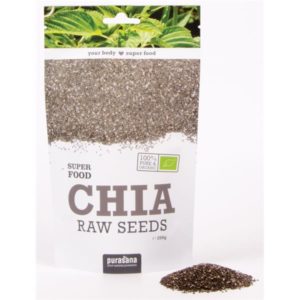Purasana Krill Oil Capsules 60pcs
31.26 €
Only 3 left in stock
Krill oil is is extremely rich in omega-3 and antioxydants. It’s used for heart disease, high levels of certain blood fats (triglycerides), high cholesterol, high blood pressure, stroke, cancer, osteoarthritis, depression, premenstrual syndrome (PMS), and painful menstrual periods.
Krill oil is oil from a tiny, shrimp-like animal. Baleen whales, mantas, and whale sharks eat primarily krill. In Norwegian, the word “krill” means “whale food.” People extract the oil from krill, place it in capsules, and use it for medicine. Some brand name krill oil products indicate that they use Antarctic krill. This usually refers to the species of krill called Euphausia superba.
High cholesterol. Developing research shows that taking 1-1.5 grams of a specific krill oil product (Neptune Krill Oil, Neptune Technologies & Bioresources, Inc) daily reduces total cholesterol and “bad” low-density lipoprotein (LDL) cholesterol, and increases “good” high-density lipoprotein (HDL) cholesterol in patients with high cholesterol. Higher doses of 2-3 grams daily also appear to significantly reduce levels of triglyceride, another type of blood fat.
Osteoarthritis. Early research shows that taking 300 mg of a specific krill oil product daily reduces pain and stiffness in people with osteoarthritis.
Premenstrual syndrome (PMS). Early research shows that taking a specific krill oil product might reduce PMS symptoms.
Rheumatoid arthritis. Early research shows that taking 300 mg of a specific krill oil product daily reduces pain and stiffness in people with rheumatoid arthritis.
High blood pressure.
Stroke.
Cancer.
Depression.
Other conditions.
How does it work?
Krill oil contains fatty acids similar to fish oil. These fats are thought to be beneficial fats that decrease swelling, lower cholesterol, and make blood platelets less sticky. When blood platelets are less sticky they are less likely to form clots.
Difference between krill oil and fish oil
Krill oil is rich with omega-3 fatty acids, mainly Eicosapentaenoic acid (EPA) and Docosahexaenoic acid (DHA), bound mostly to phospholipids. The fatty acid composition in the phospholipids in krill oil has been described in two papers.There are several differences between krill oil and fish oil, mainly in the omega-3 fatty acids carrier. Unlike fish oil, in which the omega-3 fatty acids are attached only to triglycerides, in krill oil the majority are attached to phospholipids while the rest are attached to triglycerides. A phosphorus group, which is further linked to an organic, hydrophilic, headgroup, is also attached to the glycerol backbone of phospholipids. The headgroup can consist of choline (the major phospholipid in krill oil), ethanolamine, glycerol, inositol or serine. This difference in structure results in different chemical behavior: Triglycerides are highly hydrophobic, thus they do not mix with water. Conversely, phospholipids are amphipathic because they contain a hydrophilic headgroup on one end and hydrophobic chains on the other end. Due to this unique structure, phospholipids are able to mix with water.
Another difference is that krill oil also contains the powerful natural antioxidant astaxanthin, which gives krill oil its distinct deep red color.
Unit price: 0.44 EUR/capsule
You must be logged in to post a review.











Reviews
There are no reviews yet.